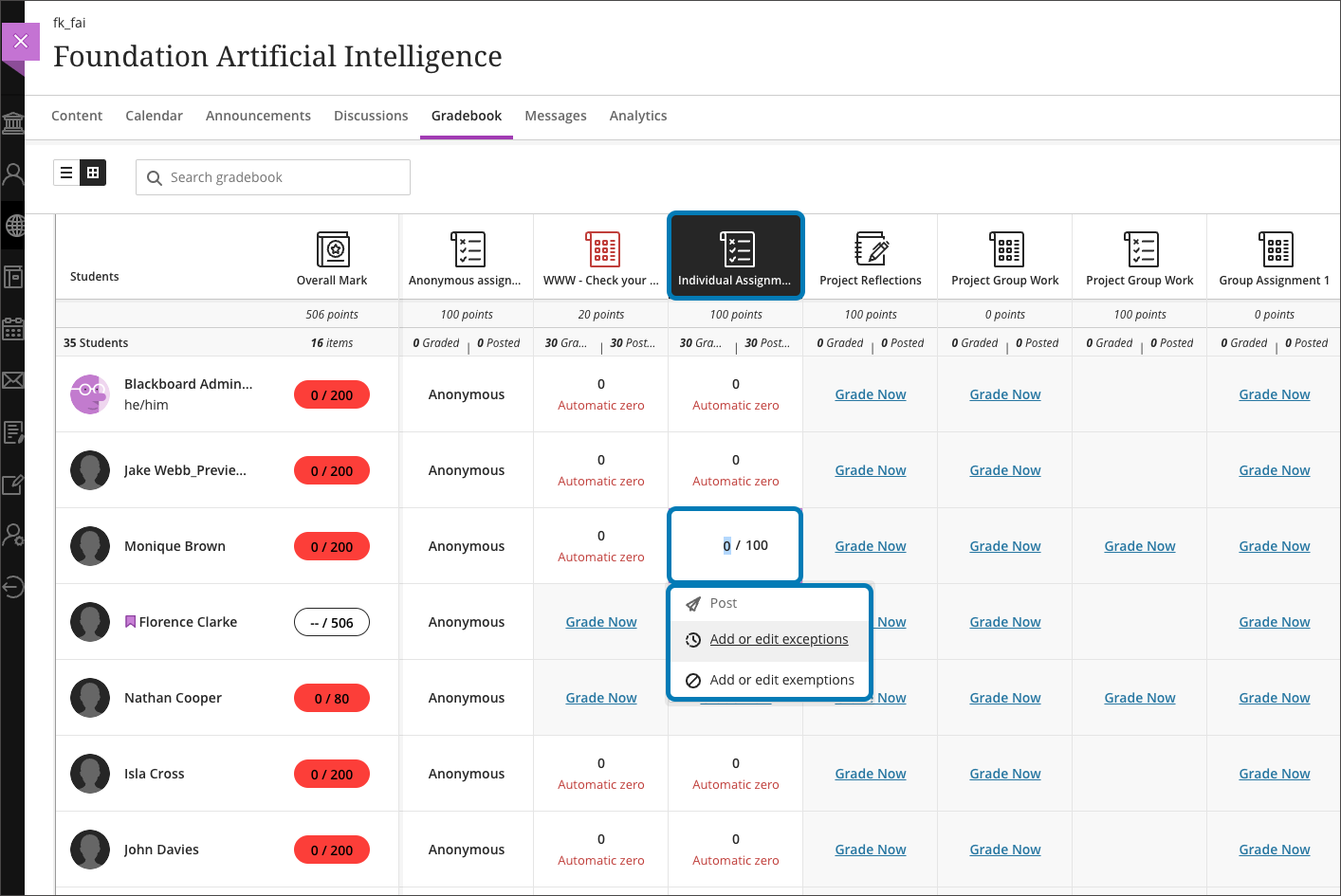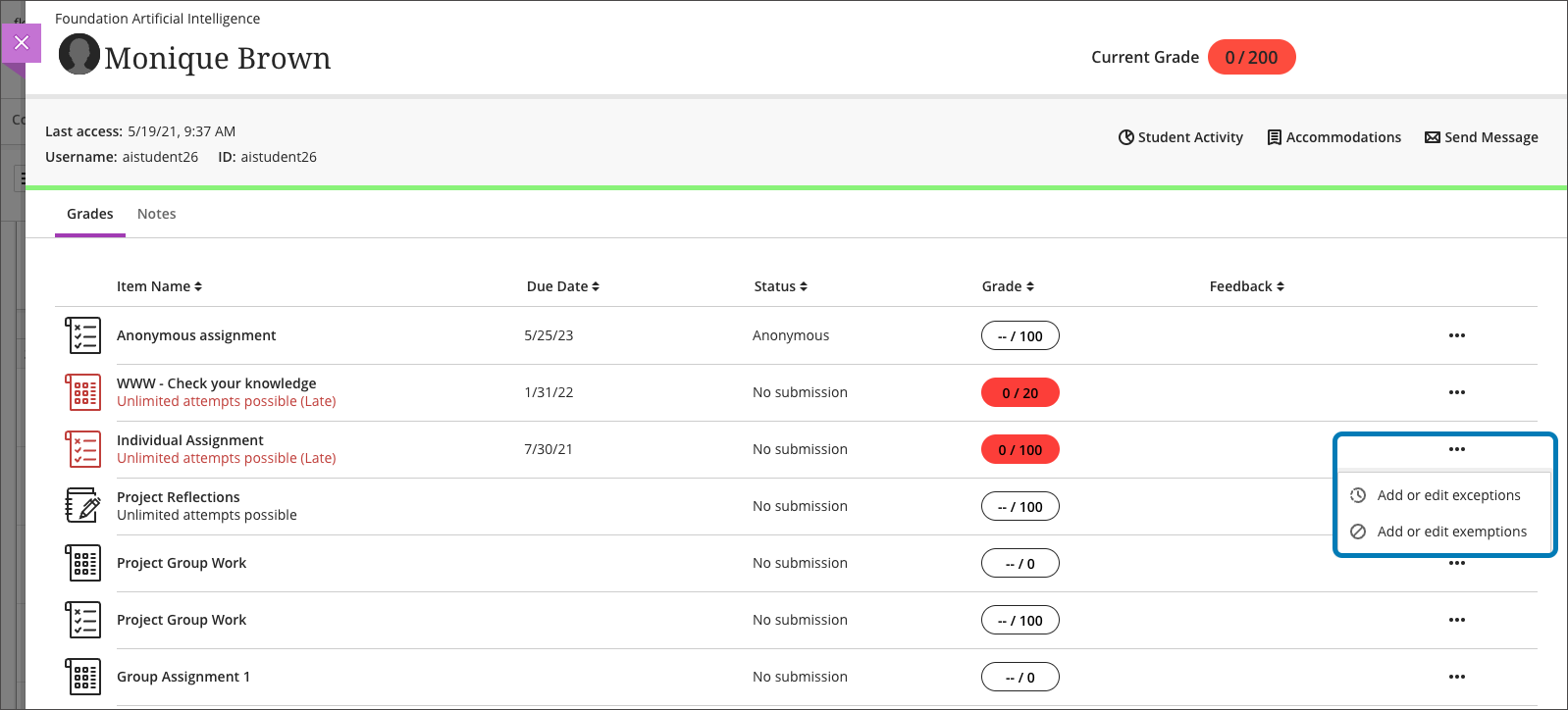Exceptions, Exemptions, Accommodations, & Release Conditions
An individual student can be given an exception on a specific test or assignment. An exception includes additional attempts or extended access, even if the assessment is hidden from other students. An exception overrides the two settings applied to everyone else for that specific assessment only.
Exceptions are different from accommodations that are set in the course roster. An accommodation applies to all due dates or time limits in the course for an individual student. Exceptions aren't allowed for due dates and time limits for an individual student or group at this time. Exceptions are only allowed for the "show on and hide after" dates and additional attempts. To learn more about setting accommodations for a student, see Accommodations in Ultra.
Exceptions also differ from Release Conditions in that Release Conditions release the availability of content items to a student or group of students.
An Exemption exempts a student from having to complete an assessment or other graded activity in the course.
Watch this short video on Exceptions & Exemptions.
About Assessment Exceptions
When special circumstances arise, you can give an individual student an exception on a specific test or assignment. An exception includes additional attempts or extended access, even if the assessment is hidden from other students. You can extend access with the "show on and hide after dates" which is different from the due date.
- An exception for the student in question overrides the settings applied to everyone else for only that specific assessment. Other students in the course don't see the exceptions that have been added.
- You can offer an exception for an assessment already graded and posted. For example, if you want a student to redo an automatically graded test that has no more attempts, you can add an additional attempt. You'll need to inform the student of the additional attempt as the system doesn't send a notification.
- If an Automatic Zero has been applied to the assessment for which an exception is being granted in the course, the grade earned after the submission will replace the Automatic Zero.
Setting Up an Exception
There are several areas from which an exception can be created for a student.
Setting an Exception from the Assessment
1. Click on the assessment in question > Submissions (upper right corner) > locate the student in need of an exception > click on the 3 dots to the right of the student name > Select Add or Edit Exceptions.


2. In the side panel that opens, set up the exception requirements as needed. The Assessment Due Date is the due date for this one particular student and does not alter the original due date on the assessment. The student receiving the exception sees this due date on the assessment while those without an exception see the original due date. If desired, additional attempts can be given to a student as well. If more than one student needs an exception, repeat this process for additional student(s).

Setting an Exception from the Gradebook
From the Grid View of the Gradebook, an exception can be set by clicking into the cell for the appropriate student and graded activity, then Add or Edit Exceptions.

Setting an Exception from the Student Overview Page
An exception can also be created from the Student Overview page for the student.
